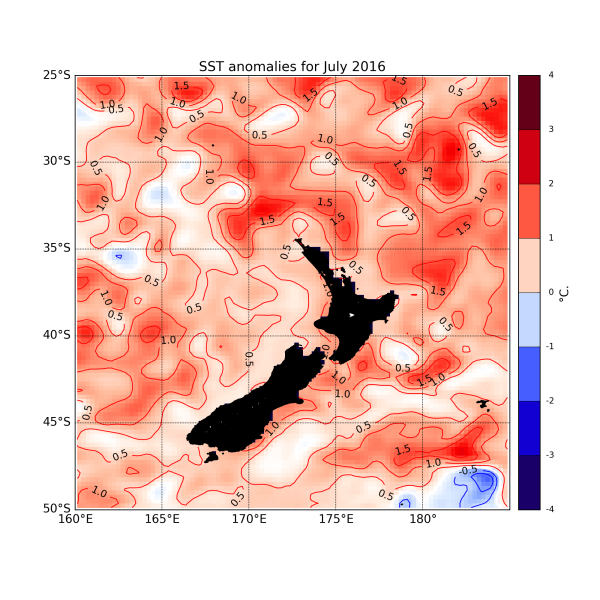ENSO (El Niño – Southern Oscillation) neutral conditions are currently present in the tropical Pacific: Sea surface temperatures (SSTs) along the eastern equatorial Pacific are near or slightly below normal, and the atmospheric conditions over the tropical Pacific are generally consistent with an ENSO-neutral state. As a whole the tropical ocean-atmosphere system still shows a leaning towards La Niña, but with a slight weakening of the signals that were observed last month (June 2016).
International guidance still favours development of La Niña conditions (50% chance) over the next three month period (August – October 2016), but note that this probability is lower than this time last month. The likelihood of La Niña conditions becoming established in the Pacific increases slightly later on, reaching 55% in November – January 2016/2017. In summary, both the current state and recent evolution of the ocean-atmosphere system in the Pacific, as well as the models' forecasts, suggest that this La Niña event, if it develops, will be characterized by a relatively late onset, short duration and weak amplitude.
For August - October 2016, there is no clear guidance or indication on seasonal airflow anomaly. However, weak anomalously low pressures are forecast around New Zealand and are likely to be accompanied with unsettled conditions.
Sea Surface Temperatures Anomalously high ocean temperatures around the country mean warmer and more humid air masses are likely to affect New Zealand, especially the North Island. Consequently, there remains an elevated risk for significant rainfall events and severe storms.


